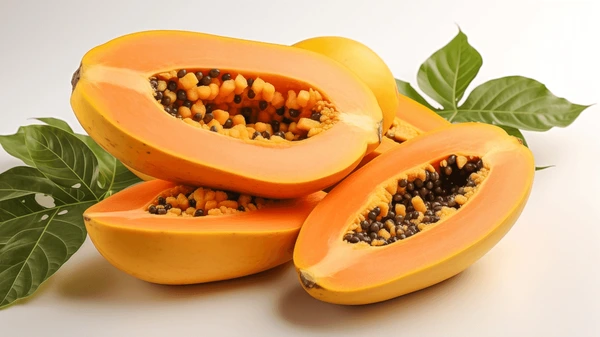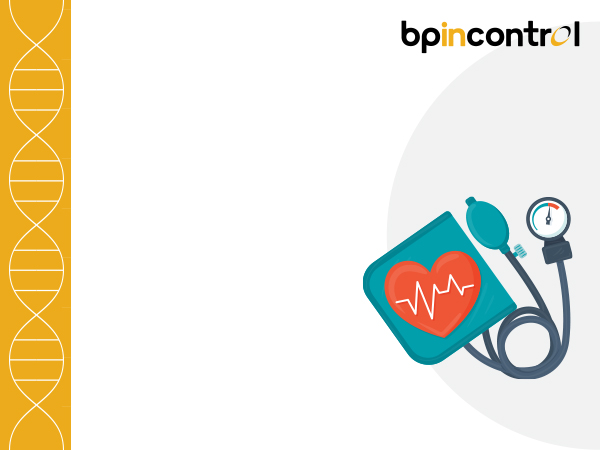Is Papaya Good for Hypertension?

Table of Contents
Papaya is a colourful tropical fruit found in Mexico. While some may dislike it, it is known for its sweet taste and vibrant colour. But it’s not only about the delicious flavour; papaya is infused with antioxidants, vitamins, and minerals. This fruit is a blessing to overall health.
To answer the question – Is papaya good for hypertension, let us explore this article in detail:
Nutritional Profile of Papaya
Papayas are a nutritional powerhouse. A closer analysis of its dietary profile shows that they are packed with vital nutrients that improve overall health. Especially for those facing high blood pressure issues, papaya is a tasty treat and a fantastic addition to a heart-healthy diet.
Here’s a detailed breakdown of the papaya’s nutritional content:
Essential Nutrients
- Vitamins A, C, and E: Help prevent DNA and vessel damage, improving heart health.
- Folic Acid: Converts homocysteine into less harmful amino acids, lowering heart disease risk.
- Fiber: Aids in managing blood sugar levels and cholesterol.
- Lycopene: Reduces the risk of heart disease and stroke.
- Potassium: Balances sodium levels to help control blood pressure.
- Folate: Supports growth and metabolism.
- Vitamin A: Improves eye health.
- Magnesium: Aids muscle and nerve function.
- Copper: Supports immune function.
- Pantothenic Acid: Improves energy production.
Nutritional Facts (Per Small Papaya, 152 grams)
- Calories: 59 kcal
- Carbohydrates: 15 g
- Fiber: 3 g
- Protein: 1 g
- Vitamin C: 157% of the RDA
- Vitamin A: 33% of the RDA
- Folate (Vitamin B9): 14% of the RDA
- Potassium: 11% of the RDA
- Trace amounts: Calcium, magnesium, vitamins B1, B3, B5, E, and K.
How Papaya Can Help with Hypertension
A blood pressure reading above 120/80 mmHg is called High blood pressure or Hypertension.
Let us understand how it helps manage high blood pressure:
- Low Sodium and High Potassium:
Papaya has very little sodium and a lot of potassium. Sodium is known to cause water retention and raise blood pressure. The high potassium in papaya helps balance sodium levels, lowering blood pressure.
- Vitamin C:
Vitamin C acts as a diuretic, helping the body flush sodium and water. This characteristic of Vitamin C helps to reduce blood pressure. As an antioxidant, vitamin C also protects the lining of blood vessels.
- Vitamin E:
Vitamin E can help lower blood pressure in people with mild hypertension by boosting nitric oxide levels and acting as an antioxidant.
- Niacin and Folate:
Regular niacin intake reduces blood pressure. It also improves HDL (good) cholesterol while lowering LDL (bad) cholesterol.
- High Fiber:
Increasing dietary fiber reduces the risk of heart disease and high blood pressure. High fiber helps keep blood sugar levels in control. This is useful for people with diabetes, who are at higher risk for high blood pressure.
For those wondering – is papaya good for high blood pressure, this information should make it clear.
How to Incorporate Papaya into a Hypertension-Friendly Diet
Let’s now consider how you can consume papaya.
Here’s how to get it ready for serving:
- Choose Locally Grown Papaya: To fully enjoy the best flavour and freshness, opt for locally sourced papayas. Choose a reddish-orange papaya for maximum benefits.
- Refrigeration: Chilling papaya in the refrigerator enhances taste.
- Cut in Half: Take the chilled fruit from the refrigerator. Slice the papaya down the middle.
- Scoop Out the Seeds: Remove the bitter black/grayish seeds using a spoon.
- Rinse the Inside: Rinse out any remaining seeds to clean the fruit. Some people prefer removing the white skin from the papaya.
- Lemon Tanginess: Squeeze juice from a quarter lemon onto the papaya. This adds vitamin C and enhances the flavor.
- Scoop Out the Flesh: Using a knife, you can separate the skin from the flesh and cut the fruit into small pieces. If the papaya is ripe, use a spoon to scoop out the sweet flesh easily.
Your delicious treat can be served raw or blended to a smooth paste.
Potential Downsides or Considerations When Eating Papaya for Hypertension
We have the papaya on our plate, but how much can we consume in one serving?
Let’s look at how much to eat and when is the best time to enjoy it.
How Much Papaya Should You Eat?
Eating papaya in moderation is recommended as part of a balanced diet. A healthy adult can consume 1-2 cups of papaya chunks (145 grams approx) daily for maximum benefits without overdoing it.
Best Time to Eat Papaya
The ideal times to eat papaya are in the morning or between meals. Its high fiber content helps control hunger pangs and manage blood sugar levels.
Who Should Avoid Papaya?
While papaya offers many benefits, it may not be suitable for everyone:
- Pregnant Women:
Semi-ripe papaya should be avoided as it contains latex. It can trigger contractions of the uterus and lead to premature labour.
- Irregular Heartbeats (Arrhythmias):
Those with heart issues should limit papaya intake. It contains small amounts of cardiac glycosides, which are compounds that boost the force of each heartbeat. These can be harmful in excess.
- Allergies:
People with latex allergies should avoid papaya. It contains a protein called chitinase that can trigger allergies.
- Kidney Stones:
Moderate vitamin C is healthy. Excessive intake can lead to the formation of stones of a compound called calcium oxalate stones, or even increase the size of existing stones in susceptible individuals.
- Hypoglycemia:
Papaya is not to decrease blood sugar levels and hence, may not be suitable for those with low blood sugar.
Conclusion
So, is papaya good for hypertension? Certainly! Papaya is a rich source of antioxidants, fibre, and essential nutrients. Thus, it is an excellent dietary addition for those battling high blood pressure. Regular papaya consumption ensures better heart health, reduces cancer risk, aids in digestion, improves skin health, supports vision, and boosts the immune system.
However, it’s important to understand that relying on papaya alone cannot help manage hypertension. It requires a holistic approach, including medication and lifestyle changes.
Disclaimer
The information contained in this article is to educate, spread awareness in relation to hypertension and other diseases to the public at large. The contents of this article are created and developed by BPinControl.in through its authors, which has necessary, authorisations, license, approvals, permits etc to allow usage of this articles on The Website. The views and opinions expressed in this article are views, opinions of the respective authors and are independently endorsed by doctors. Although great care has been taken in compiling and checking the information in this article, The Website shall not be responsible, or in any way liable for any errors, omissions or inaccuracies in this article whether arising from negligence or otherwise, or for any consequences arising therefrom. The content of this article is not a substitute for any medical advice. The Website shall not be held responsible or liable for any consequence arising out of reliance on the information provided in the article.


Comments (0)
No comments found.Add your comment